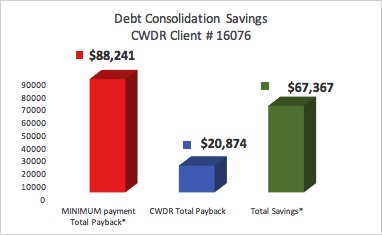

Why does it matter who owns your debt? It can impact the amount of contact you get when you’re in a debt relief program. In that case, they fall under the FDCPA, just like collection agencies. Debt buyers own the debt and have the same legal rights as original creditors unless their main business is debt collection. Debt collectors are covered by the FDCPA and must stop contacting you if you ask them to.ĭebt buyers purchase the right to collect a debt from original creditors or collection agencies. Original creditors may turn accounts over to collections and pay the agency a fee for collecting, or they may sell the debt at a discount to the agency. Your state may or may not have laws in place to protect you from aggressive collection efforts from your creditors.Ĭollection agencies make money by collecting debt for others. So while debt collectors have to leave you alone once you ask them to stop contacting you, original creditors may be able to keep calling. Protections guaranteed by the Fair Debt Collection Practices Act (FDCPA) do not apply to original creditors. Original creditors are the people or companies you borrow from – like banks that make personal loans or credit card issuers. What’s the difference between an original creditor, a debt buyer, and a collection agency? When attempting debt settlement, you could be dealing with the original creditor, a debt buyer, or a collection agency.

Private (not government-guaranteed) student loans Here are the most common types of unsecured loans that you might be able to settle with debt relief: However, a debt relief program can work with unsecured creditors. If you stop paying secured creditors, they can simply foreclose on your home or repossess your car. What kinds of debt can I settle with a debt relief program?ĭebt relief is not for loans secured by collateral, like mortgages or auto financing.

Over time, debt relief programs can help you get out of debt that you can’t afford. In many cases, the first account can be settled in four-to-six months. A debt consultant can help you estimate your timeframe. How long does a debt relief program take?ĭebt relief generally takes between two and four years, depending on the amount of enrolled debt, how fast you can save for debt settlement, and how much your creditors are willing to accept. Once a creditor concludes that something is better than nothing, you have a good chance of settling your account. If a debt is older, your state’s statute of limitations for debt could kick in and make your balance uncollectible. Creditors begin to fear that you might even walk away or file bankruptcy and pay nothing (or practically nothing). However, if you start missing payments, it becomes obvious that you’re having trouble paying what you owe. They assume that you’d like to protect that score and that you can afford to do so. Creditors are less likely to settle if you’ve made your payments and have a good credit score. They only agree to a debt relief program if they believe that other options will cost them more and that you can’t afford to pay what you owe. Creditors are not in business to lose money. “Why would my creditors agree to settle my debt?” you might well ask. Why would creditors agree to settle my debt? You can speed up the settlement process by cutting expenses or selling things you don’t need to reach your savings goal faster. You pay no fees to a debt settlement company until it settles a debt for you. You continue to make your monthly payments into your debt settlement savings account as your accounts are settled one by one. Negotiations begin with creditors when your debt consultant feels that you have saved enough. Debt relief programs can help you get out of debt faster. You and your debt consultant come up with an amount that you can afford, and you put that money into a debt settlement savings account each month. You stop making payments to your creditors. How Does a Debt Relief Program Work?ĭebt relief typically works this way: you enroll your unsecured accounts into a debt relief program with a debt settlement company. In its simplest form, a debt relief program means that your creditors agree to accept less than what you owe as payment in full.

What is debt relief? How does debt relief work? Debt relief programs are designed to help consumers struggling with more debt than they can afford.


 0 kommentar(er)
0 kommentar(er)
